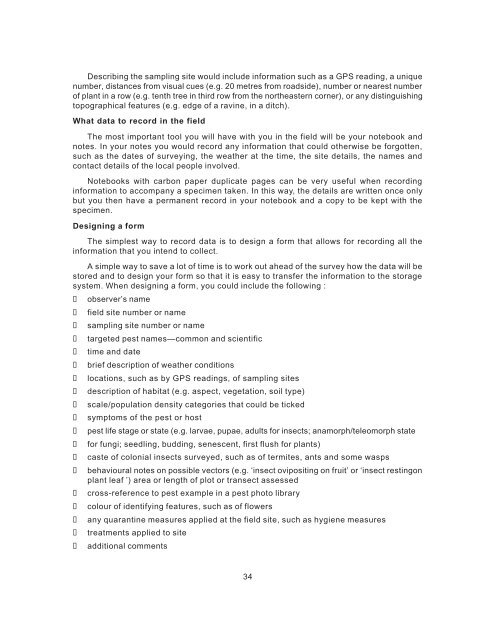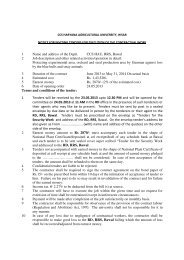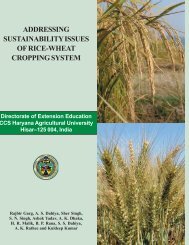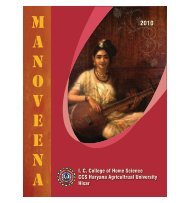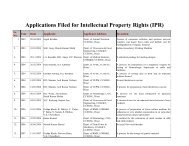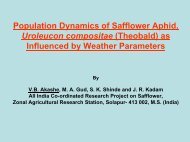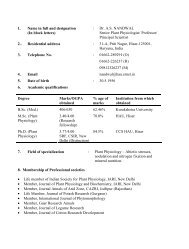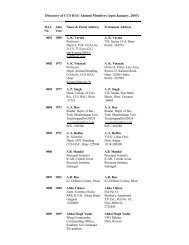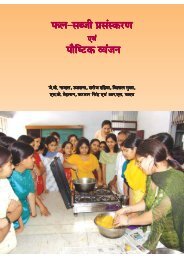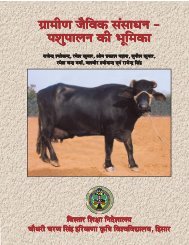Foreword - CCS HAU, Hisar
Foreword - CCS HAU, Hisar
Foreword - CCS HAU, Hisar
Create successful ePaper yourself
Turn your PDF publications into a flip-book with our unique Google optimized e-Paper software.
Describing the sampling site would include information such as a GPS reading, a unique<br />
number, distances from visual cues (e.g. 20 metres from roadside), number or nearest number<br />
of plant in a row (e.g. tenth tree in third row from the northeastern corner), or any distinguishing<br />
topographical features (e.g. edge of a ravine, in a ditch).<br />
What data to record in the field<br />
The most important tool you will have with you in the field will be your notebook and<br />
notes. In your notes you would record any information that could otherwise be forgotten,<br />
such as the dates of surveying, the weather at the time, the site details, the names and<br />
contact details of the local people involved.<br />
Notebooks with carbon paper duplicate pages can be very useful when recording<br />
information to accompany a specimen taken. In this way, the details are written once only<br />
but you then have a permanent record in your notebook and a copy to be kept with the<br />
specimen.<br />
Designing a form<br />
The simplest way to record data is to design a form that allows for recording all the<br />
information that you intend to collect.<br />
A simple way to save a lot of time is to work out ahead of the survey how the data will be<br />
stored and to design your form so that it is easy to transfer the information to the storage<br />
system. When designing a form, you could include the following :<br />
observer’s name<br />
field site number or name<br />
sampling site number or name<br />
targeted pest names—common and scientific<br />
time and date<br />
brief description of weather conditions<br />
locations, such as by GPS readings, of sampling sites<br />
description of habitat (e.g. aspect, vegetation, soil type)<br />
scale/population density categories that could be ticked<br />
symptoms of the pest or host<br />
pest life stage or state (e.g. larvae, pupae, adults for insects; anamorph/teleomorph state<br />
for fungi; seedling, budding, senescent, first flush for plants)<br />
caste of colonial insects surveyed, such as of termites, ants and some wasps<br />
behavioural notes on possible vectors (e.g. ‘insect ovipositing on fruit’ or ‘insect restingon<br />
plant leaf ’) area or length of plot or transect assessed<br />
cross-reference to pest example in a pest photo library<br />
colour of identifying features, such as of flowers<br />
any quarantine measures applied at the field site, such as hygiene measures<br />
treatments applied to site<br />
additional comments<br />
34


